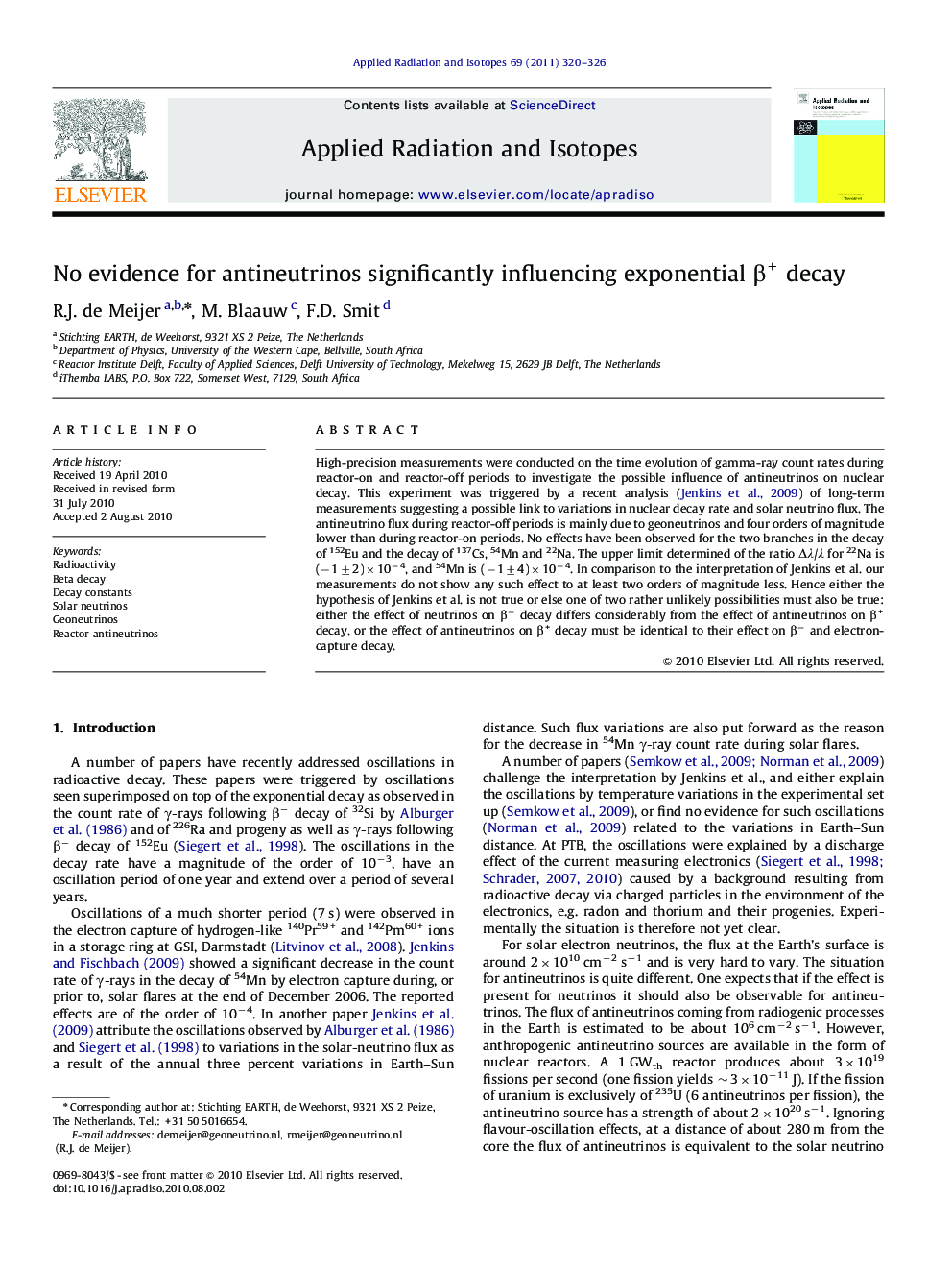| Article ID | Journal | Published Year | Pages | File Type |
|---|---|---|---|---|
| 10730470 | Applied Radiation and Isotopes | 2011 | 7 Pages |
Abstract
High-precision measurements were conducted on the time evolution of gamma-ray count rates during reactor-on and reactor-off periods to investigate the possible influence of antineutrinos on nuclear decay. This experiment was triggered by a recent analysis (Jenkins et al., 2009) of long-term measurements suggesting a possible link to variations in nuclear decay rate and solar neutrino flux. The antineutrino flux during reactor-off periods is mainly due to geoneutrinos and four orders of magnitude lower than during reactor-on periods. No effects have been observed for the two branches in the decay of 152Eu and the decay of 137Cs, 54Mn and 22Na. The upper limit determined of the ratio Îλ/λ for 22Na is (â1±2)Ã10â4, and 54Mn is (â1±4)Ã10â4. In comparison to the interpretation of Jenkins et al. our measurements do not show any such effect to at least two orders of magnitude less. Hence either the hypothesis of Jenkins et al. is not true or else one of two rather unlikely possibilities must also be true: either the effect of neutrinos on βâ decay differs considerably from the effect of antineutrinos on β+ decay, or the effect of antineutrinos on β+ decay must be identical to their effect on βâ and electron-capture decay.
Related Topics
Physical Sciences and Engineering
Physics and Astronomy
Radiation
Authors
R.J. de Meijer, M. Blaauw, F.D. Smit,
